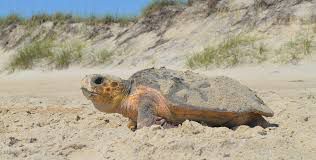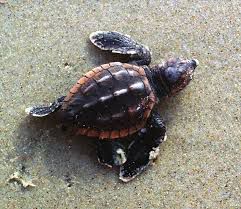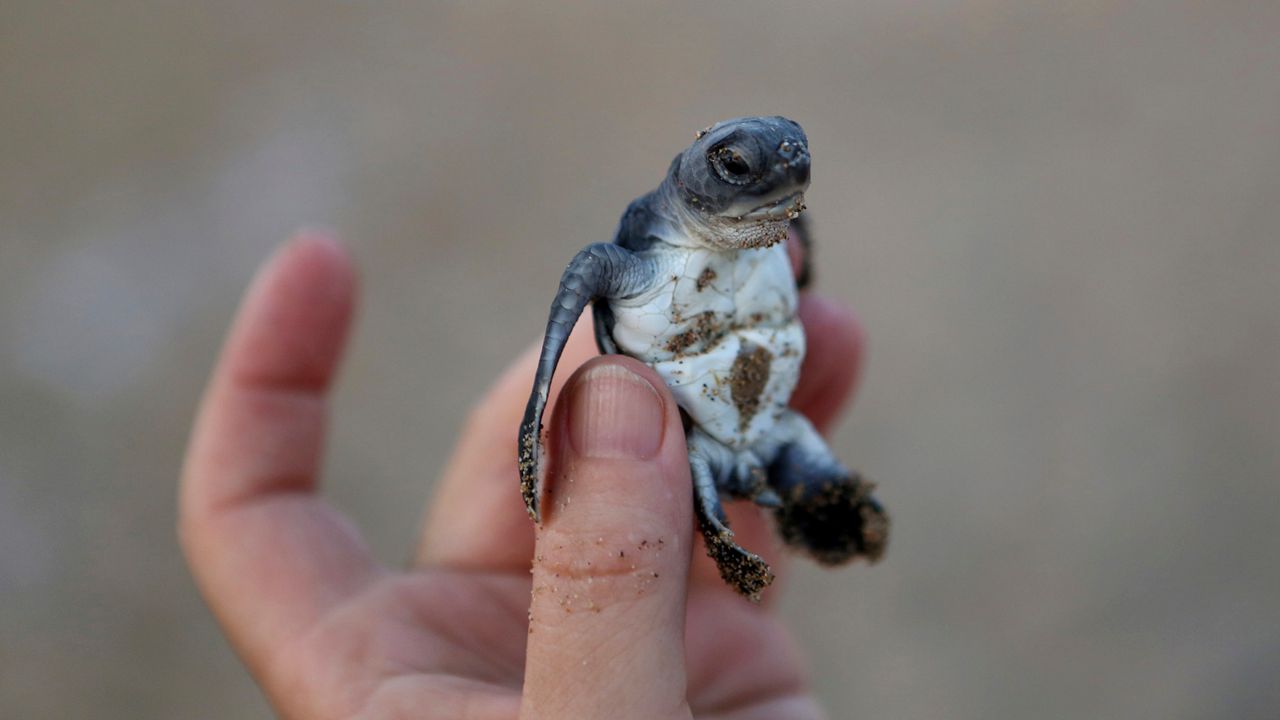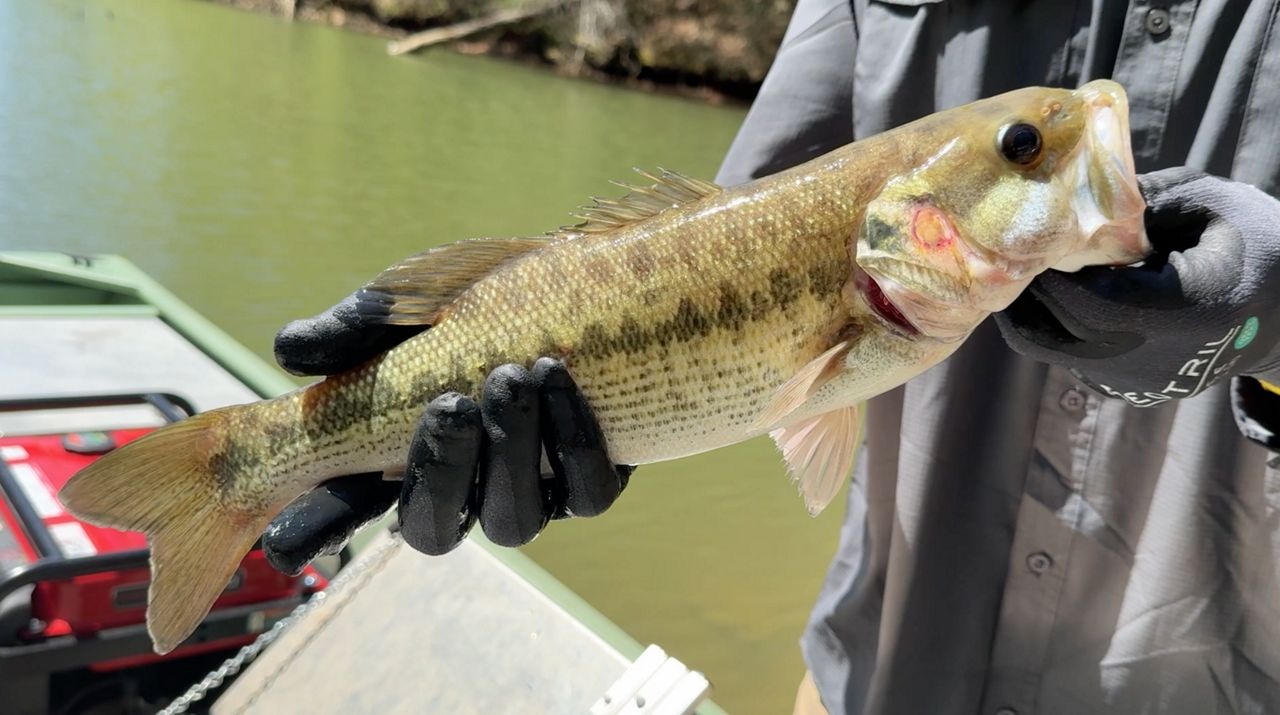May marks the beginning of sea turtle nesting season in North Carolina, when female sea turtles will come ashore across the 330 miles of ocean-facing sandy beaches that provide a suitable habitat to lay their eggs.
What You Need To Know
- Peak sea turtle nesting season runs from May through August along 330 miles of North Carolina's coast
- Five sea turtle species visit North Carolina to lay their eggs, but the loggerhead is most common
- All five species are endangered or threatened under the U.S. Endangered Species Act
- Volunteer groups around the state help hatchlings make it to the ocean by sectioning off nests and setting up shades to block off inland light
There are seven sea turtle species in the world, and six can be found in the U.S., all of which are endangered or threatened, according to the North Carolina Wildlife Resources Commission (NCWRC). Five of those species visit North Carolina to lay their eggs, but loggerheads are the most common species found in the state.
Starting around mid-May and lasting through about September, female sea turtles will migrate to the beaches in the same region they were born. After mating, they will come ashore when they are ready to lay their eggs, usually at night to avoid predators and the hot, dry sun.
Sea turtles crawl up the beach, dig a hole 1-2 feet deep, and then leave a nest of about 120 leathery eggs. The sea turtle then covers the nest with sand and crawls back into the ocean, leaving the eggs to incubate for about two months.

One sea turtle can lay eggs between four and seven times each season, but they only lay eggs every two or three years.
Once the eggs are ready to hatch, the hatchlings will break out of their shells and crawl to the sea, usually at night, in a process called the boil. Most hatchlings do not survive, either being taken away by birds of crabs on the beach, or eaten by seabirds and fish in the water. The N.C. Wildlife Resources Commission says that only 1 in 1,000 live to reproduce.
It takes 20-30 years for a sea turtle to reach sexual maturity, but some nest until the age of 80. Sea turtles can live between 50-100 years.
Most hatchlings do not survive into adulthood, which is tricky for a species that is endangered. Sea turtles, both hatchlings and adults, also face other challenges that threaten their survival.
The N.C. Wildlife Resources Commission says that development and heavy traffic on beaches can disrupt adult sea turtles attempting to lay eggs and destroy nests. Sea turtles can also indirectly be captured by fishing nets, which can injure and kill them. On top of that, beach renourishment activities can uncover sea turtle nests.
But there are several organizations in North Carolina trying to help hatchlings survive. The NCWRC runs the Sea Turtle Project, which monitors nests and stranded sea turtles up and down the coast. The NCWRC permits over 20 sea turtle projects in North Carolina.

Most of those groups are volunteer based, like Wrightsville Beach’s Sea Turtle Project, which has volunteers walk up and down the beach every morning during nesting season, looking for nests to rope off.
The Atlantic Beach Sea Turtle Project also does daily beach walks, as well as picking up trash on the beach and installing shade cloths when the nest is near hatching, which helps prevent the hatchlings from being distracted by inland lights, which they can mistake for the moon.
To help as many hatchlings as possible make it to the water, minimize beachfront lighting during nesting season, and don't use a flashlight when walking on the beach at night. Remove all equipment from the beach when leaving. The debris can prevent turtles from nesting and block hatchlings from making it to the ocean.
Volunteers, as well as groups like the NCWRC and National Park Service also count the hatched and whole eggs, and live and dead hatchlings, which are logged into the NCWRC’s database.
The NCWRC developed a Sea Turtle Conservation Plan in late April. The plan seeks to maintain and increase the population of the five sea turtle species that can be found along North Carolina’s coast.
The agency is accepting public comments on the plan through May 24.






)

